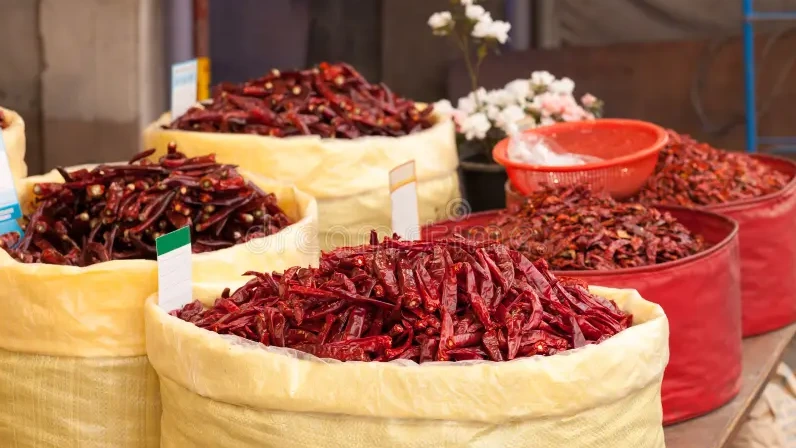
The Cambodian spices
Cambodia’s cuisine is built around a rich array of spices and herbs, many of which give Cambodian food its distinctive aroma and balance of flavors. Cambodian spices are often blended into a spice paste known as kroeung, used as the base for many dishes. Here’s a closer look at some of the key spices and herbs in Cambodian cooking
These spices combine to create a balance of sweet, sour, salty, and bitter flavors characteristic of Cambodian cuisine. This unique blend is often complemented by fresh herbs like Thai basil, mint, and cilantro, adding layers of flavor and aroma to Cambodian dishes

Lemongrass (Slek Krey)
- Flavor: Citrusy and slightly grassy, with a hint of minty freshness.
- Uses: Essential in kroeung (the base for curries and stews), soups, marinades, and grilled dishes. It’s a foundational ingredient, bringing a fresh and citrusy brightness to dishes.

Galangal (Romdeng)
- Flavor: Pungent, earthy, and slightly peppery, with a hint of citrus. Galangal is similar to ginger but has a sharper and more complex flavor.
- Uses: Often used in kroeung, soups, and stews. It’s grated or sliced and adds depth and warmth to dishes, especially curries.

Kaffir Lime Leaves (Sleuk Kteah)
- Flavor: Bright, citrusy, and slightly floral with a unique aroma.
- Uses: Usually added to soups, curries, and stews. The leaves are often shredded finely or used whole for fragrance, and are also used to garnish dishes like amok curry.

Turmeric (Rumdohng)
- Flavor: Earthy and slightly bitter, with a warm, peppery aroma.
- Uses: Fresh or powdered turmeric is used in kroeung, curries, and marinades, adding color and flavor to dishes. It’s a main ingredient in dishes like amok and nom banh chok.

Fingerroot (Rieng)
- Flavor: Mildly spicy and somewhat earthy, with a hint of ginger-like warmth.
- Uses: A component of kroeung that gives it a distinct flavor. It’s also used in soups and stews, adding subtle complexity.

Kampot Pepper
- Flavor: Fragrant, slightly fruity, and mildly spicy. Known for its complex, floral, and slightly sweet notes.
- Uses: Often used in marinades, stir-fries, and as a seasoning for grilled meats. Kampot pepper is considered one of the finest peppers in the world and is a point of pride in Cambodian cuisine.

Star Anise (Chhkai Meas)
- Flavor: Sweet, slightly licorice-like with warm, woody notes.
- Uses: Often used in broths, soups, and slow-cooked dishes, particularly in samlor kari (Coconut Milk Soup). It provides a gentle warmth and aroma to dishes.

Garlic (Kh’tiem)
- Flavor: Pungent, savory, and slightly spicy.
- Uses: Used extensively in Cambodian cooking, both raw and cooked. Garlic is commonly pounded with lemongrass and galangal to make kroeung and is also fried and used as a garnish.

Shallots (Sngor Kteang)
- Flavor: Sweet, mildly pungent, and slightly garlicky.
- Uses: Added to kroeung, curries, and soups, shallots bring a mild sweetness to Cambodian dishes. They are also often fried and used as a topping for noodles and rice dishes.

Dried Red Chilies (M'tes Barng Skov)
- Flavor: Spicy and smoky, with varying levels of heat.
- Uses: Although Cambodian cuisine isn’t as spicy as some Southeast Asian cuisines, dried chilies are used to add depth and mild heat to dishes, especially in curries and marinades.

Prahok (Fermented Fish Paste)
- Flavor: Strong, salty, and pungent with a deep umami flavor.
- Uses: This isn’t a spice in the traditional sense, but prahok is used in almost every Cambodian dish, either as a base flavor or condiment. It adds a unique umami and depth to curries, stir-fries, and dipping sauces.

Palm Sugar (Skor Thnaot)
- Flavor: Caramel-like sweetness with a slightly smoky taste.
- Uses: Often used to balance out the savory and spicy flavors in Cambodian cooking. Palm sugar is a key ingredient in sauces, marinades, and desserts.
The Essence of Khmer Spices
Understanding Cambodian Curry Powders and Paste
Curry is a flavor-packed spice that is commonly used in Khmer cuisine, known for its vibrant and aromatic dishes. Cambodian curry powders and paste are essential ingredients in creating the rich and unique flavors that define this cuisine.
In Cambodian cooking, curry powders are made by grinding a mix of spices such as turmeric, cumin seeds, fennel seeds, and star anise. Each spice contributes to the complex flavor profile of the curry powder, resulting in a fragrant and flavorful blend. These powders can be bought in stores or made at home for those who prefer a personalized touch.
Cambodian curry paste is another key component in creating delicious dishes. Made from a combination of spices, including lemongrass, lime zest, and coconut, this paste adds depth and richness to curries. It can be used as a base for various dishes, allowing for the customization of flavors.
When shopping for Cambodian curry powders and paste, it’s helpful to look for products with high ratings and positive reviews. This ensures that you are getting a quality product that will enhance the taste of your dishes.
To create a traditional Cambodian curry, start by sautéing curry paste in oil until fragrant. Then, add your choice of protein, vegetables, and coconut milk to the pan, simmering until everything is cooked through and the flavors have melded together. The resulting dish will be a delightful blend of spice that embodies the essence of Cambodian cuisine.
